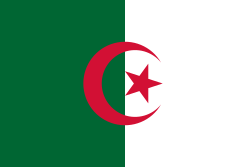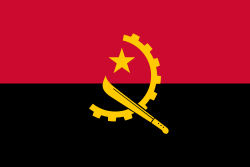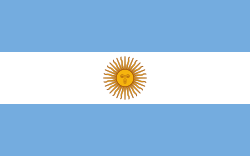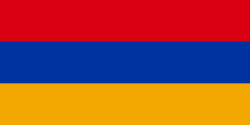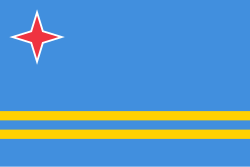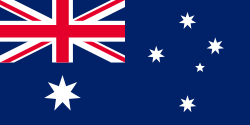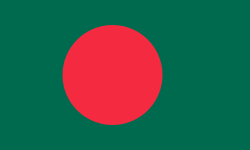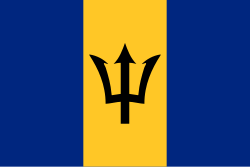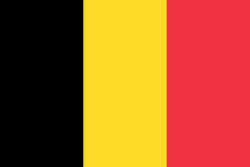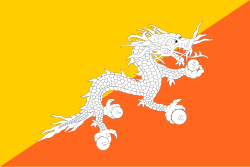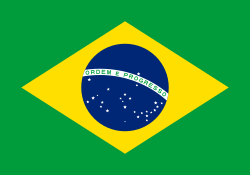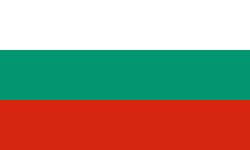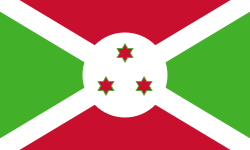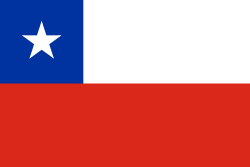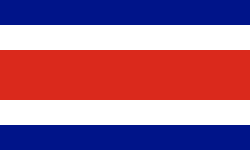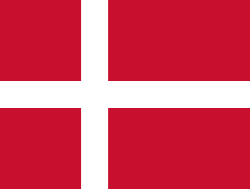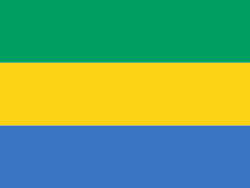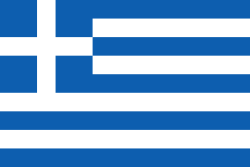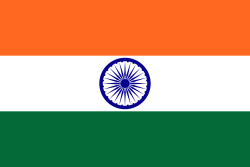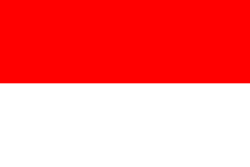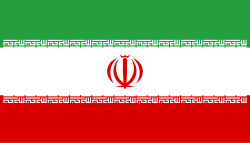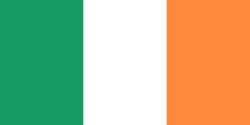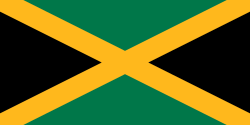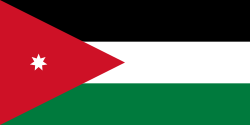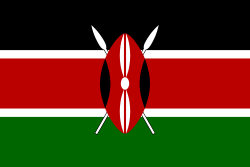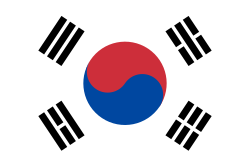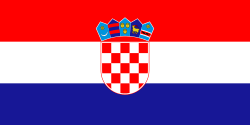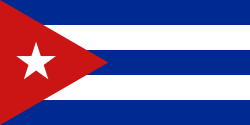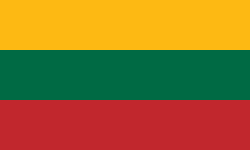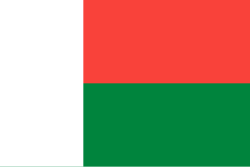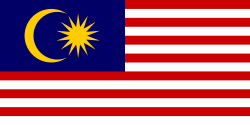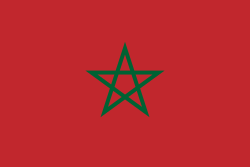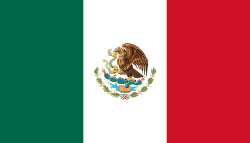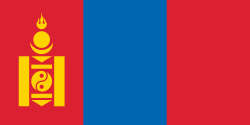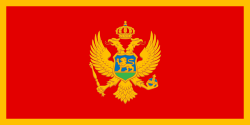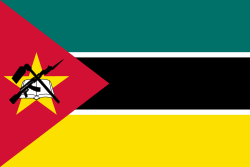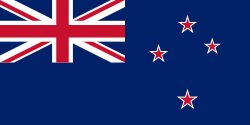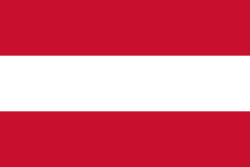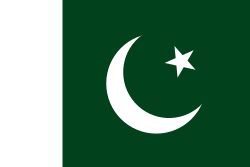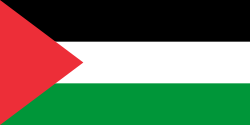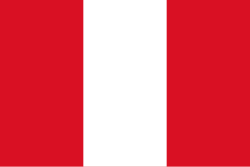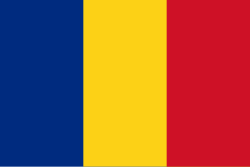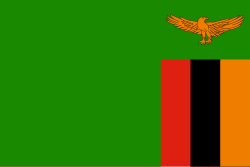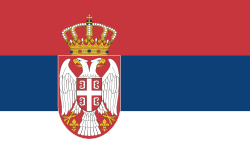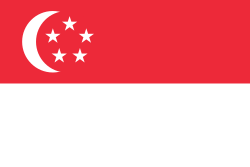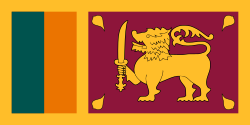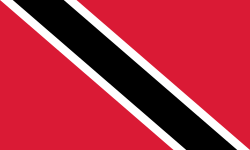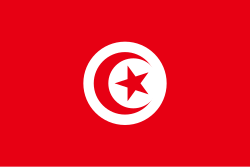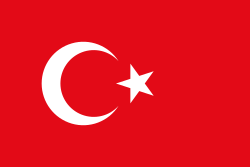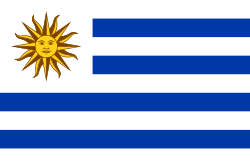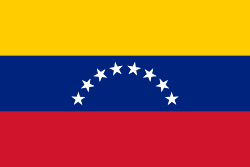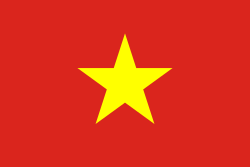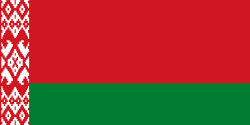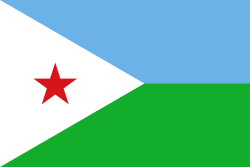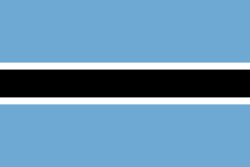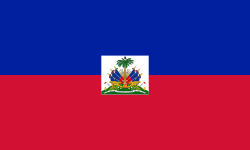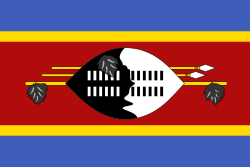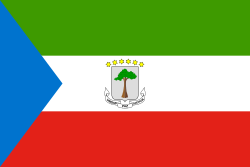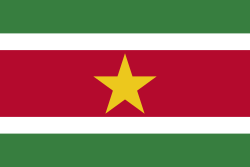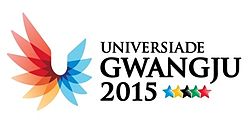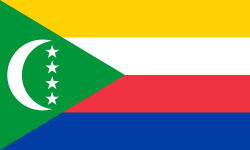Sommer-Universiade 2015
 | |
| Light Up Tomorrow | |
| Austragungsort | Gwangju, Südkorea |
| Eröffnung | 3. Juli 2015 |
| Schlussfeier | 14. Juli 2015 |
| Disziplinen | |
| Wettbewerbe | 272 in 21 Sportarten |
| Teilnehmende Mannschaften | 138 |
| Teilnehmende Athleten | 7.281 |
| Eröffnet durch | Park Geun-hye |
| ← Kasan 2013 | Taipeh 2017 → |
Die Sommer-Universiade 2015, offiziell XXVIII. Sommer-Universiade, fand vom 3. bis 14. Juli in der südkoreanischen Stadt Gwangju statt.
Bewerbung
Die Städte Edmonton, Taipeh und Gwangju bewarben sich um die Austragung der Sommer-Universiade 2015. Hamburg reichte ebenfalls eine Bewerbung ein, zog diese aber später wieder zurück.[1] Am 23. Mai 2009 verkündete die FISU an ihrem Treffen in Brüssel Gwangju als Austragungsort.[2] Gwangju hatte sich bereits für die Sommer-Universiade 2013 als Austragungsort beworben.
Wettkampfstätten
Die Universiade wird in 37 Sportstätten in Gwangju und Umgebung ausgetragen. Die meisten Sportstätten wurden für die Universiade renoviert, zwei Stadien wurden neu gebaut.[3]
| Sportstätte | Sportart | Kapazität | Eröffnung |
|---|---|---|---|
| World-Cup-Stadium | Leichtathletik, Fußball | 40 245 | 2004 |
| Yeomju Swimming Pool | Wasserball | 21 554 | 1993 |
| Yeomju Sports Complex | Basketball | 8500 | 1987 |
| Bitgoeul Sports Complex | Judo | 2000 | |
| Kimdaejung Convention Center | Fechten | 1000 | 1997 |
| Mudeung Baseball Stadium | Baseball | 13 872 | |
| Yeomju Indoor Tennis Court | Tennis | 216 | 2006 |
| Honam University Football Stadium | Fußball | 2000 | 1997 |
| Salesian High School Gym | Basketball | 700 | 1989 |
| Sosok High School Gym | Basketball | 2064 | 1981 |
| Jungang Girl’s High School Gym | Basketball | 1500 | 2005 |
| Gwangju University Gym | Volleyball | 1200 | 2006 |
| Honam University Gym | Volleyball | 1000 | 2001 |
| Chosun University Gym | Taekwondo | 1000 | 2003 |
| DongKang College Gym | Handball | 2924 | 2002 |
| New Construction Swimming Pool | Wasserspringen, Schwimmen | ||
| New Construction Sports Complex | Volleyball, Rhythmische Sportgymnastik, Gerätturnen | ||
| Gwangju Baseball Stadium | Baseball | ||
| Naju Public Stadium | Fußball | 7000 | 2001 |
| Hwasun Public Stadium | Fußball | 2000 | 2003 |
| Damyang Chuseong Stadium | Fußball | 1979 | |
| Yeonggwang Sportium Football Field | Fußball | 2097 | 2007 |
| Mokpo International Football Center Football Field | Fußball | 2009 | |
| Mokpo International Football Center Auxiliary Football Field | Fußball | 1240 | 2009 |
| Muan Chodang University Gymnasium | Basketball | 450 | 1997 |
| Muan Indoor Gymnasium | Basketball | 1799 | 2009 |
| Yeonggwang Sportium Gymnasium | Basketball | 1554 | 2007 |
| Naju Dongshin University Gymnasium | Volleyball | 1329 | 2010 |
| Jangseong Hong Gildong Gymnasium | Tennistennis | 1279 | 2001 |
| Hwasun Hanium Culture Sports Center | Badminton | 2008 | |
| Naju Multipurpose Gymnasium | Handball | 1658 | 2011 |
| Naju Indoor Gymnasium | Handball | 2152 | 2002 |
| Gurye Indoor Gymnasium | Handball | 2300 | 1988 |
| Mokpo Indoor Gymnasium | Handball | 5500 | 1987 |
| Naju Shooting Range Complex | Schießen | 1700 | 2008 |
| Jangseong Boating Complex | Rudern | 3000 | 2009 |
| Jinwol Tennis Complex | Tennis | 3000 | |
| Naju Assistant Stadium | Fußball | 2011 |
Teilnehmende Nationen
Aus 138 Ländern nahmen 10.622 Personen teil, 7.281 Sportlerinnen und Sportler sowie 3.341 Offizielle.[4] Aus Deutschland waren 115 Aktive mit einem Durchschnittsalter von 22,8 Jahren an 108 Entscheidungen beteiligt und errangen 18 Medaillen (5 × Gold, 5 × Silber und 8 × Bronze).[4]
Der Ausrichter meldete 12.885 Teilnehmer aus 143 Ländern,[5] wobei es sich um die Angaben aus der Meldeliste handeln dürfte.
Sportarten
Die Wettkämpfe wurden 13 Pflicht- und 8 Wahlsportarten ausgetragen.[6]
Legende zum nachfolgend dargestellten Wettkampfprogramm:
| Eröffnungs- und Abschlusszeremonie | Qualifikationswettkämpfe | 1 | Finalentscheidungen |
Letzte Spalte: Gesamtanzahl der Entscheidungen in den einzelnen Sportarten
| Zeitplan der Sommer-Universiade (mit Anzahl der Entscheidungen) | ||||||||||||||
|---|---|---|---|---|---|---|---|---|---|---|---|---|---|---|
| Juli | 2. Do | 3. Fr | 4. Sa | 5. So | 6. Mo | 7. Di | 8. Mi | 9. Do | 10. Fr | 11. Sa | 12. So | 13. Mo | 14. Di | Gesamt |
| Eröffnung | ||||||||||||||
| 1 | 5 | 6 | ||||||||||||
| 1 | 1 | |||||||||||||
| 2 | 2 | |||||||||||||
| 5 | 5 | 10 | ||||||||||||
| 2 | 2 | 2 | 2 | 2 | 2 | 12 | ||||||||
| 1 | 1 | 2 | ||||||||||||
| 2 | 2 | 10 | 14 | |||||||||||
| 4 | 4 | |||||||||||||
| 2 | 2 | |||||||||||||
| 4 | 4 | 4 | 4 | 2 | 18 | |||||||||
| 2 | 11 | 14 | 9 | 14 | 50 | |||||||||
| 2 | 6 | 8 | ||||||||||||
| 5 | 8 | 13 | ||||||||||||
| 6 | 7 | 1 | 9 | 5 | 6 | 34 | ||||||||
| 3 | 6 | 6 | 7 | 3 | 7 | 8 | 2 | 42 | ||||||
| 2 | 3 | 4 | 4 | 4 | 4 | 2 | 23 | |||||||
| 2 | 5 | 7 | ||||||||||||
| 2 | 1 | 2 | 2 | 7 | ||||||||||
| 1 | 1 | 2 | ||||||||||||
| 1 | 1 | 2 | ||||||||||||
| 2 | 2 | 2 | 1 | 1 | 5 | 13 | ||||||||
| Abschluss | ||||||||||||||
| Medaillenentscheidungen | 11 | 22 | 28 | 40 | 28 | 34 | 34 | 24 | 34 | 16 | 2 | 272 | ||
| Juli | 2. Do | 3. Fr | 4. Sa | 5. So | 6. Mo | 7. Di | 8. Mi | 9. Do | 10. Fr | 11. Sa | 12. So | 13. Mo | 14. Di | Gesamt |
Medaillenspiegel
Weblinks
Einzelnachweise
- ↑ Kein Sportfest: Hamburg zieht Universiade-Notbremse. In: Spiegel Online. 1. Oktober 2008, abgerufen am 23. Januar 2016.
- ↑ FISU Attributes 2015 Universiades. 23. Mai 2009, archiviert vom (nicht mehr online verfügbar) am 13. Juni 2016; abgerufen am 4. Juli 2013 (englisch). Info: Der Archivlink wurde automatisch eingesetzt und noch nicht geprüft. Bitte prüfe Original- und Archivlink gemäß Anleitung und entferne dann diesen Hinweis.
- ↑ Sports facilities. Ehemals im (nicht mehr online verfügbar); abgerufen am 4. Juli 2013 (englisch). (Seite nicht mehr abrufbar. Suche in Webarchiven) Info: Der Link wurde automatisch als defekt markiert. Bitte prüfe den Link gemäß Anleitung und entferne dann diesen Hinweis.
- ↑ a b Ergebnisspiegel Sommer-Universiade 2003 bis 2015, auf: adh.de, abgerufen am 19. August 2021.
- ↑ Universiade Gwangju 2015; the journey from inception to conclusion. 27. Juli 2015, archiviert vom (nicht mehr online verfügbar) am 24. September 2015; abgerufen am 4. August 2015 (englisch). Info: Der Archivlink wurde automatisch eingesetzt und noch nicht geprüft. Bitte prüfe Original- und Archivlink gemäß Anleitung und entferne dann diesen Hinweis.
- ↑ Schedule & Event time-line, auf: gwangju2015.com, abgerufen am 19. August 2021.
Auf dieser Seite verwendete Medien
Flag of Anguilla, adopted on 30 May 1990 and modified slightly on 25 January 1999.
The flag of Aruba
Flag of Ethiopia
Flag of Australia, when congruence with this colour chart is required (i.e. when a "less bright" version is needed).
See Flag of Australia.svg for main file information.Die Flagge Burkina Fasos
Das Bild dieser Flagge lässt sich leicht mit einem Rahmen versehen
Die Flagge der Dominikanischen Republik hat ein zentriertes weißes Kreuz, das bis zu den Rändern reicht. Dieses Emblem ähnelt dem Flaggendesign und zeigt eine Bibel, ein Kreuz aus Gold und sechs dominikanische Flaggen. Um den Schild herum sind Oliven- und Palmzweige und oben am Band steht das Motto "Dios, Patria, Libertad" ("Gott, Land, Freiheit") und zur liebenswürdigen Freiheit. Das Blau soll für Freiheit stehen, Rot für das Feuer und Blut des Unabhängigkeitskampfes und das weiße Kreuz symbolisierte, dass Gott sein Volk nicht vergessen hat. "Dominikanische Republik". Die dominikanische Flagge wurde von Juan Pablo Duarte, dem Vater der nationalen Unabhängigkeit der Dominikanischen Republik, entworfen. Die erste dominikanische Flagge wurde von einer jungen Dame namens Concepción Bona genäht, die in der Nacht des 27. Februar 1844 gegenüber der Straße von El Baluarte, dem Denkmal, an dem sich die Patrioten versammelten, um für die Unabhängigkeit zu kämpfen, wohnte. Concepción Bona wurde von ihrer Cousine ersten Grades unterstützt Maria de Jesús Pina.
bendera Indonesia
Flagge des Irans. Die dreifarbige Flagge wurde 1906 eingeführt, aber nach der Islamischen Revolution von 1979 wurden die Arabische Wörter 'Allahu akbar' ('Gott ist groß'), in der Kufischen Schrift vom Koran geschrieben und 22-mal wiederholt, in den roten und grünen Streifen eingefügt, so daß sie an den zentralen weißen Streifen grenzen.
Man sagt, dass der grüne Teil die Mehrheit der katholischen Einwohner des Landes repräsentiert, der orange Teil die Minderheit der protestantischen, und die weiße Mitte den Frieden und die Harmonie zwischen beiden.
Flag of Canada introduced in 1965, using Pantone colours. This design replaced the Canadian Red Ensign design.
Flagge der Demokratischen Republik Kongo. Erstellt laut den Angaben der Staatsverfassung von 2006.
Das Bild dieser Flagge lässt sich leicht mit einem Rahmen versehen
Die Flagge von Nepal mit rechtem Rand (Seitenverhältnis 3:4)
Die Flagge von Nepal mit rechtem Rand (Seitenverhältnis 3:4)
Autor/Urheber: See File history below for details., Lizenz: OGL-om 1.0
Flagge Omans
Flagge Österreichs mit dem Rot in den österreichischen Staatsfarben, das offiziell beim österreichischen Bundesheer in der Charakteristik „Pantone 032 C“ angeordnet war (seit Mai 2018 angeordnet in der Charakteristik „Pantone 186 C“).
Flagge Portugals, entworfen von Columbano Bordalo Pinheiro (1857-1929), offiziell von der portugiesischen Regierung am 30. Juni 1911 als Staatsflagge angenommen (in Verwendung bereits seit ungefähr November 1910).
Die quadratische Nationalfahne der Schweiz, in transparentem rechteckigem (2:3) Feld.
Flagge von Senegal
Verwendete Farbe: National flag | South African Government and Pantone Color Picker
| Grün | gerendert als RGB 0 119 73 | Pantone 3415 C |
| Gelb | gerendert als RGB 255 184 28 | Pantone 1235 C |
| Rot | gerendert als RGB 224 60 49 | Pantone 179 C |
| Blau | gerendert als RGB 0 20 137 | Pantone Reflex Blue C |
| Weiß | gerendert als RGB 255 255 255 | |
| Schwarz | gerendert als RGB 0 0 0 |
Flagge Trinidad und Tobago
Flagge des Vereinigten Königreichs in der Proportion 3:5, ausschließlich an Land verwendet. Auf See beträgt das richtige Verhältnis 1:2.
Flagge des Vereinigten Königreichs in der Proportion 3:5, ausschließlich an Land verwendet. Auf See beträgt das richtige Verhältnis 1:2.
Pictograms of Olympic sports - Badminton. This is unofficial sample picture. Images of official Olympic pictograms for 1948 Summer Olympics and all Summer Olympics since 1964 can be found in corresponding Official Reports.
Pictograms of Olympic sports - Baseball. This is unofficial sample picture. Images of official Olympic pictograms for 1948 Summer Olympics and all Summer Olympics since 1964 can be found in corresponding Official Reports.
Pictograms of Olympic sports - Basketball. This is unofficial sample picture. Images of official Olympic pictograms for 1948 Summer Olympics and all Summer Olympics since 1964 can be found in corresponding Official Reports.
Pictograms of Olympic sports - Archery. This is unofficial sample picture. Images of official Olympic pictograms for 1948 Summer Olympics and all Summer Olympics since 1964 can be found in corresponding Official Reports.
Pictograms of Olympic sports - Fencing. This is unofficial sample picture. Images of official Olympic pictograms for 1948 Summer Olympics and all Summer Olympics since 1964 can be found in corresponding Official Reports.
Pictograms of Olympic sports - Football. This is unofficial sample picture. Images of official Olympic pictograms for 1948 Summer Olympics and all Summer Olympics since 1964 can be found in corresponding Official Reports.
Pictograms of Olympic sports - Gymnastics (artistic). This is unofficial sample picture. Images of official Olympic pictograms for 1948 Summer Olympics and all Summer Olympics since 1964 can be found in corresponding Official Reports.
Pictograms of Olympic sports - Golf. This is unofficial sample picture. Images of official Olympic pictograms for 1948 Summer Olympics and all Summer Olympics since 1964 can be found in corresponding Official Reports.
Pictograms of Olympic sports - Handball. This is unofficial sample picture. Images of official Olympic pictograms for 1948 Summer Olympics and all Summer Olympics since 1964 can be found in corresponding Official Reports.
Pictograms of Olympic sports - Judo. This is unofficial sample picture. Images of official Olympic pictograms for the 1948 Summer Olympics and all Summer Olympics since 1964 can be found in corresponding Official Reports.
Pictograms of Olympic sports – . This is an unofficial sample picture. Images of official Olympic pictograms for 1948 Summer Olympics and all Summer Olympics since 1964 can be found in corresponding Official Reports.
Pictograms of Olympic sports - Gymnastics (rhythmic). This is unofficial sample picture. Images of official Olympic pictograms for 1948 Summer Olympics and all Summer Olympics since 1964 can be found in corresponding Official Reports.
Pictograms of Olympic sports - Rowing. This is unofficial sample picture. Images of official Olympic pictograms for 1948 Summer Olympics and all Summer Olympics since 1964 can be found in corresponding Official Reports.
Pictograms of Olympic sports - Shooting. This is unofficial sample picture. Images of official Olympic pictograms for 1948 Summer Olympics and all Summer Olympics since 1964 can be found in corresponding Official Reports.
Pictograms of Olympic sports - Swimming. This is unofficial sample picture. Images of official Olympic pictograms for 1948 Summer Olympics and all Summer Olympics since 1964 can be found in corresponding Official Reports.
Piktogramm der olympischen Sportart Taekwondo. Dies ist ein inoffizielles Beispielbild. Offizielle Piktogramme für die Sommerolympiade 1948 und alle olympischen Sommerspiele seit 1964 können in den Offiziellen Berichten gefunden werden.
Pictograms of Olympic sports - Tennis. This is unofficial sample picture. Images of official Olympic pictograms for 1948 Summer Olympics and all Summer Olympics since 1964 can be found in corresponding Official Reports.
Pictograms of Olympic sports - Tennis. This is unofficial sample picture. Images of official Olympic pictograms for 1948 Summer Olympics and all Summer Olympics since 1964 can be found in corresponding Official Reports.
Pictograms of Olympic sports - Volleyball (indoor). This is unofficial sample picture. Images of official Olympic pictograms for 1948 Summer Olympics and all Summer Olympics since 1964 can be found in corresponding Official Reports.
Pictograms of Olympic sports - Water polo. This is unofficial sample picture. Images of official Olympic pictograms for 1948 Summer Olympics and all Summer Olympics since 1964 can be found in corresponding Official Reports.
Pictograms of Olympic sports - Diving. This is unofficial sample picture. Images of official Olympic pictograms for 1948 Summer Olympics and all Summer Olympics since 1964 can be found in corresponding Official Reports.
Chinese Taipei Olympic Flag. According to the official website of Chinese Taipei Olympic Committee, Blue Sky(circle) & White Sun(triangles) above the Olympic rings is neither the National Emblem of the Republic of China, nor the Party Emblem of Kuomintang (KMT), but a design in between, where the triangles do not extend to the edge of the blue circle, as registered at International Olympic Committee in 1981 and digitally rendered in 2013. Besides, the blue outline of the five-petaled plum blossom is broader than the red one. Moreover, the CMYK code of the blue one and the Blue Sky & White Sun is "C100-M100-Y0-K0", and different from the Olympic rings (C100-M25-Y0-K0). Note that it's the only version recognized by IOC.
Logo of FISU (wordmark)
Flagge Namibias
Die National- und offizielle Staatsflagge von Haiti. Die Zivilflagge findet sich hier.

